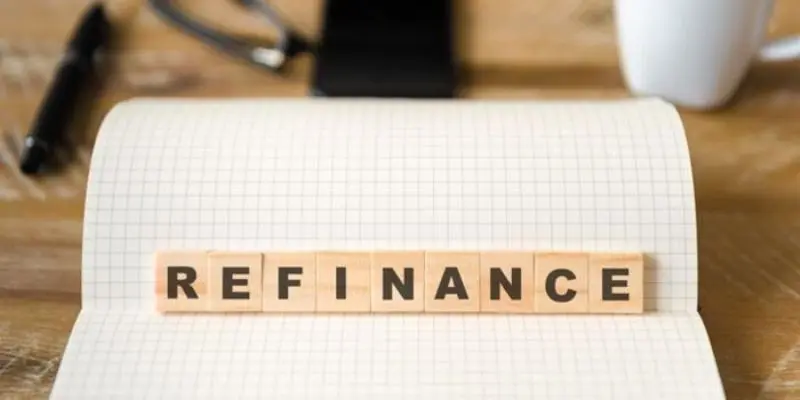Shaping Your Financial Future: An In-depth Guide to Mortgage Loan Refinancing
Your mortgage loan plays a significant role in your financial journey. Over time, you may find that your financial goals or circumstances change, leading you to consider mortgage loan refinancing.
Refinancing allows you to modify the terms of your existing mortgage, potentially saving money, lowering monthly payments, or accessing additional funds.
In this comprehensive guide, we will explore the intricacies of mortgage loan refinancing, including its benefits, process, and key considerations, empowering you to make informed decisions that shape your financial future.
Understanding Mortgage Loan Refinancing
Mortgage loan refinancing involves replacing your current mortgage with a new one, typically to obtain better terms and benefits.
It allows you to restructure your mortgage to better align with your financial goals, such as securing a lower interest rate, adjusting the loan term, changing from an adjustable-rate mortgage (ARM) to a fixed-rate mortgage (or vice versa), or tapping into the equity in your home.
Benefits of Mortgage Loan Refinancing
Refinancing your mortgage can offer several potential benefits:
1. Lower Interest Rates:
Refinancing when interest rates are lower than when you obtained your original loan can lead to substantial interest savings over the life of the loan.
2. Lower Monthly Payments:
By refinancing to a lower interest rate or extending the loan term, you can reduce your monthly mortgage payments, freeing up cash for other financial goals.
3. Shorter Loan Term:
Refinancing to a shorter loan term, such as switching from a 30-year to a 15-year mortgage, allows you to pay off your loan more quickly and potentially save on interest payments.
4. Access to Equity:
With a cash-out refinance, you can tap into the equity built in your home, using the funds for home improvements, debt consolidation, or other financial needs.
5. Debt Consolidation:
Refinancing enables you to consolidate high-interest debt, such as credit card balances or personal loans, into your mortgage, potentially reducing your overall interest costs.
The Refinancing Process
To embark on the refinancing journey, follow these key steps:
1. Assess Your Goals and Financial Situation:
Determine your refinancing goals, such as lowering monthly payments or accessing funds. Evaluate your financial situation, including credit score, income stability, and debt-to-income ratio.
2. Research and Compare Lenders:
Shop around and obtain loan estimates from different lenders to compare interest rates, fees, and terms. Consider factors such as reputation, customer service, and closing costs.
3. Prepare Documentation:
Gather the necessary financial documentation, including income statements, tax returns, bank statements, and proof of homeowners insurance. This ensures a smooth application process.
4. Submit the Application:
Complete the loan application with your chosen lender, providing accurate and detailed information about your financial situation, employment history, and the property.
5. Appraisal and Underwriting:
The lender will order an appraisal to determine the current value of your home. The underwriting process involves verifying your financial information, assessing your creditworthiness, and evaluating your loan eligibility.
6. Closing:
Once your loan is approved, schedule a closing appointment to sign the necessary documents. Be prepared to pay closing costs, which may include appraisal fees, origination fees, and title-related expenses.
7. Repayment:
After closing, start making mortgage payments according to the terms of your new loan.
Key Considerations for Refinancing
While refinancing can be advantageous, carefully consider these factors:
1. Closing Costs:
Refinancing typically involves closing costs, which can vary based on the loan amount and lender. Evaluate whether the potential savings from refinancing outweigh the costs.
2. Break-Even Point:
Calculate the break-even point—the time it takes for the monthly savings from refinancing to offset the closing costs. If you plan to sell the home before reaching the break-even point, refinancing may not be financially beneficial.
3. Creditworthiness:
Lenders consider your credit score and financial history when evaluating your refinancing application. A strong credit profile increases your chances of securing favorable terms and interest rates.
4. Loan Term:
Consider how long you plan to stay in your home. If you anticipate moving in the near future, the potential savings from refinancing may not outweigh the costs incurred.
5. Future Interest Rate Trends:
Research and monitor interest rate trends. If rates are currently low and are expected to rise, it may be advantageous to refinance sooner rather than later.
Conclusion
Mortgage loan refinancing presents an opportunity to reshape your financial future by optimizing the terms of your mortgage to better align with your goals.
By understanding the benefits, following the refinancing process, and considering key factors, you can make informed decisions that positively impact your long-term financial well-being.
Remember to carefully evaluate the potential savings against the costs involved and consult with mortgage professionals to determine the best course of action based on your unique circumstances.
With careful planning and consideration, mortgage loan refinancing can be a valuable tool for achieving your financial objectives and securing a brighter future.



